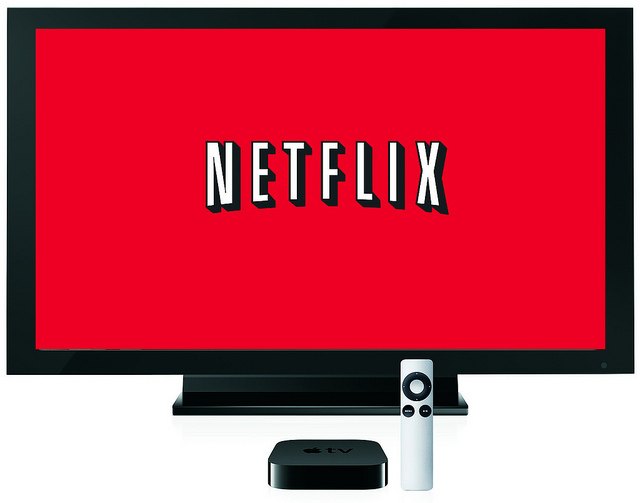Difference Between OTT and VOD
Key Difference – OTT vs VOD
OTT stands for Over the Top whereas VOD stands for Video on Demand. The key difference between OTT and VOD is that OTT can be related to a product or a service that is provided over the internet whereas VOD is only related to videos and presentations.
What is OTT (Over the Top)?
OTT is an application or service that is able to provide a product over the internet. This method bypasses traditional methods of distribution. Over the top services are mostly related to media and communication and are lower in cost when compared to traditional delivery methods.
Over the top applications can be anything that disrupts a traditional delivery billing models. Hulu and Netflix that replaced regular TV providers and Skype that replaced long distance communication providers are examples of OTT.
As over the top applications have replaced traditional delivery methods, similar or overlapping companies have gotten into conflict. Traditional ISP and telco companies have been challenged by over the top applications by third party firms. Netflix and cable companies are in conflict due to the two services overlapping with each other. Cable companies are paid for access to the internet, but consumers opt not to use the cable packages. Instead, they prefer to use video streaming through the internet. Although cable companies are eager to increase download speeds of the internet, conflicts caused by competitors like Netflix will not support such instances as it would bypass traditional distribution channels.
Over the top is famous in the entertainment world. This is due to the ability of OTT to merge with the television and digital video world. Over the top is able to deliver films and TV content with the help of the internet. The user does not need to subscribe to traditional cables, satellites, and TV services in order to view content. Cable providers provide the broadband internet connection needed for the OTT apps and services to work. Due to this fact, cable companies will need to play an important part when it comes to the growth of OTT services. OTT was unable to develop rapidly as the technology challenge of delivering content over the web at high speed was a barrier. But this factor seems to be vanishing as internet speeds keep increasing.
OTT is a value-added service, and most of us use these services even without realizing. In simple terms, this service is used over the network service providers service as referred by the name of over the top. The network service being utilized cannot control, has no right or responsibility or claim for the service that is provided over it. This is because the user can make use of the internet as preferred.

What is VOD (Video on Demand)?
VOD, better known as video on demand, allows the user to watch their preferred video content on their TV or computers. They can select the video content they want to watch. Internet protocol TV provides video on demand as a dynamic feature. The user is provided with the menu of available videos from which to choose. The video that was selected is transmitted through real-time streaming protocol. VOD will give viewers immediate access to the videos they want to watch. The programs that can be provided by VOD include sports, entertainment, education, and featured films. While TV uses traditional broadcast technology, VOD uses unicast transmission. VOD is commonly used in video conferencing. Although VOD is a popular alternative to TV, it is not widely used due to limitations in the bandwidth in today’s networks. VOD uses interactive TV technology where the viewer can watch the program in real time or download the same to be viewed later. The VOD systems usually consist of a TV receiver, set top box, at the consumer end. The service can also be delivered to computers, high-end mobile phones, and advanced digital media devices.
As mentioned before, due to lack of bandwidth, VOD has not been able to expand as expected. The lack of bandwidth has caused bottlenecks and long download times that will inconvenience the viewer. VOD is also able to work well over a wide geographic region when it is assisted by a satellite-based network. But when more people request multiple programs continuously, it may overwhelm the network that is providing the service.
One of the ways that this problem can be rectified is to store programs on servers to cater the request of the subscribers. This technology is called “store and forward”. This will increase the availability of the program and the reliability of it as well when compared with a single gigantic repository. This system will also help in setting up a billing structure independently.
VOD has been around since the 1990’s. VOD is offered by many providers as a triple play service. VODs are also used to enhance video conferencing and presentations in educational institutions. High-end hotels also cater this feature.
What is the difference between OTT and VOD?
Service:
OTT: OTT can be related to a product or service
VOD: VOD is only related to videos and presentations
Channels:
OTT: A range of channels are available to be viewed.
VOD: The user can only view selected videos and this service is premium in nature.
Speed:
OTT: OTT is faster than VOD
VOD: As the user is forced to download the file, video quality may drop and the video may have long buffering times.
Platform:
OTT: OTT provides video streaming and video on demand.
VOD: VOD favors the broadcaster, on-demand video portals, and related enterprises.
Secureness:
OTT: OTT is able to deliver video content over smart phones and connected devices.
VOD: VOD is secured over the internet and can be supported by multiple devices.
Quality:
OTT: OTT is more professional in managing, monetizing and distributing video content.
VOD : VOD provides an uncompromised video experience.
Image Courtesy:
“Netflix on Apple TV” by methodshop .com (CC BY-SA 2.0) via Flickr
ncG1vNJzZmivp6x7pbXFn5yrnZ6YsqOx07CcnqZemLyue8OinZ%2Bdopq7pLGMm5ytr5Wau267061kmqaUYsO0edWom2g%3D